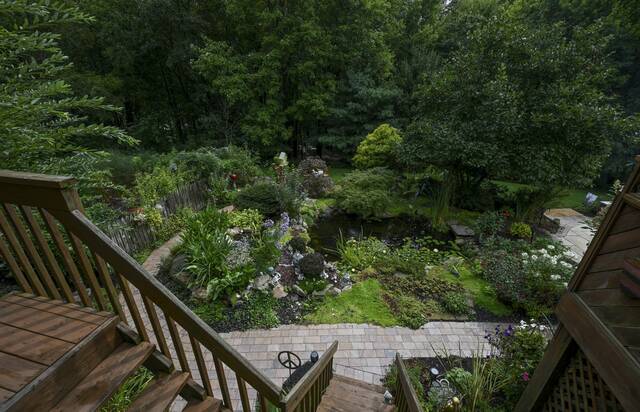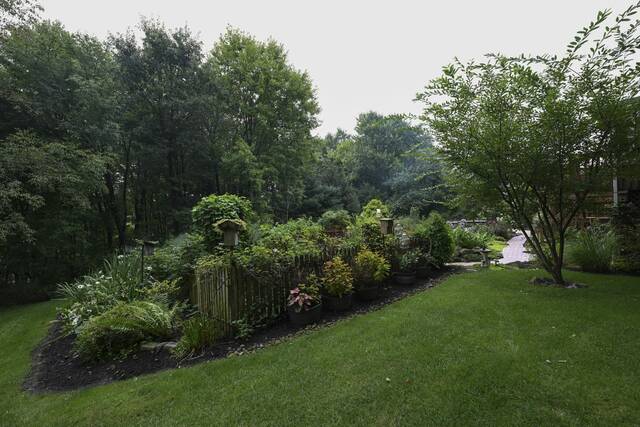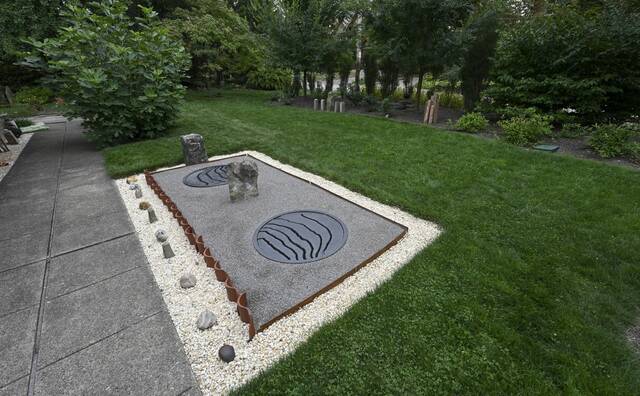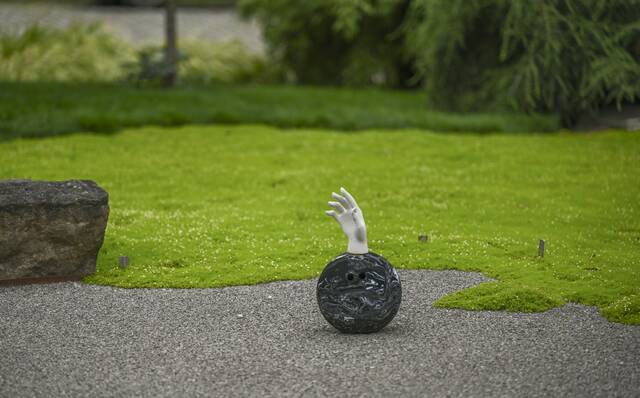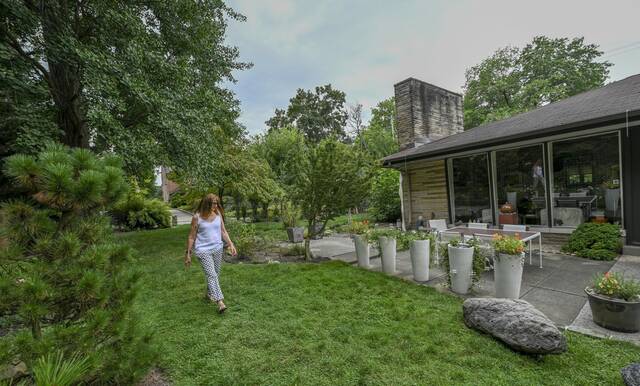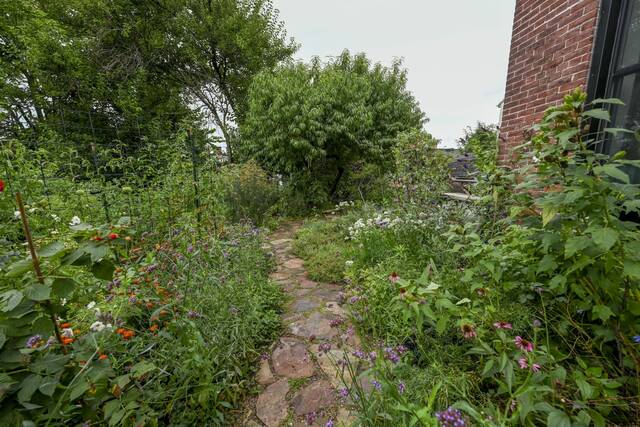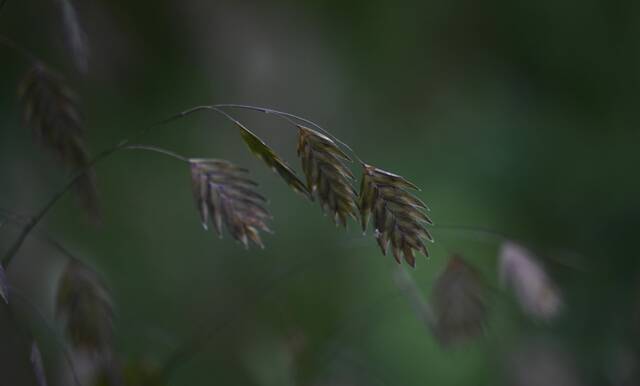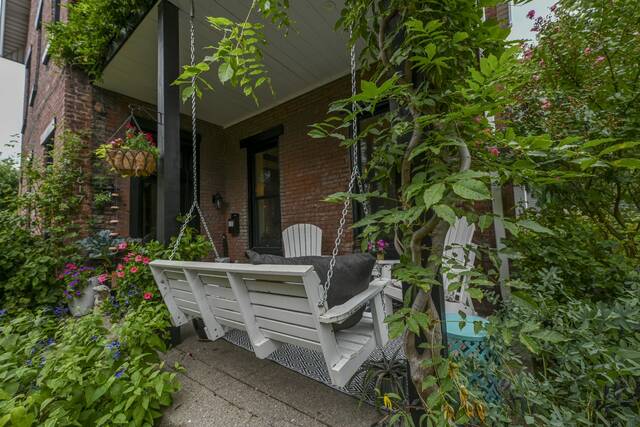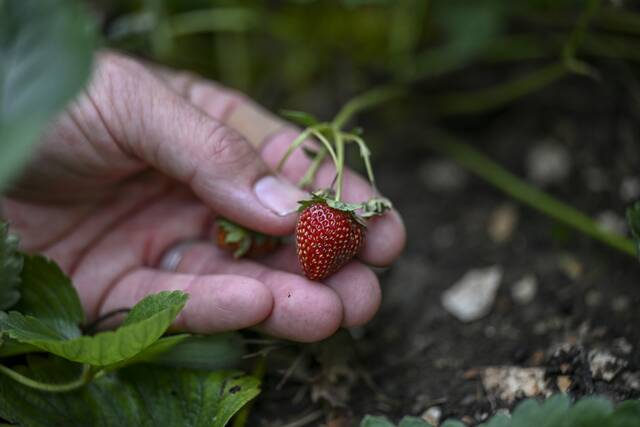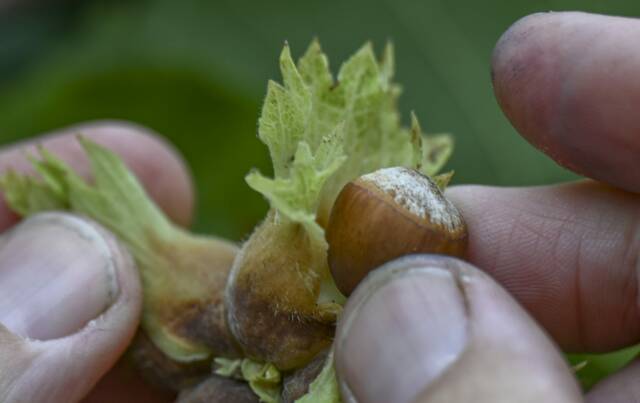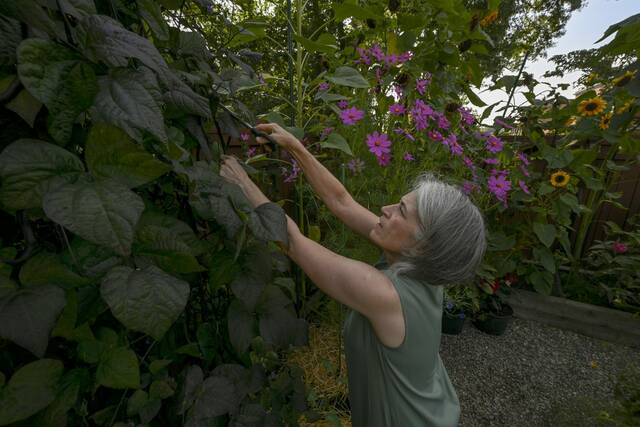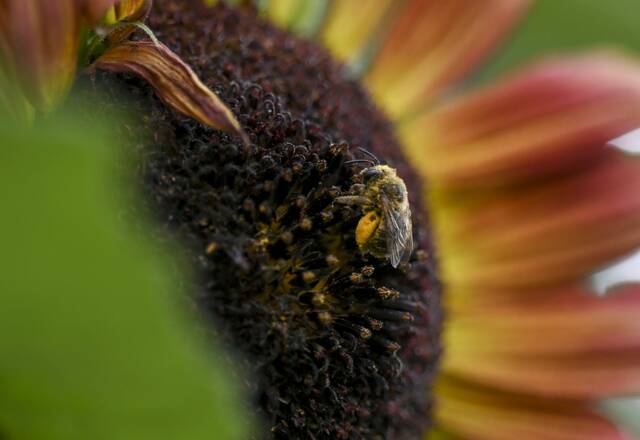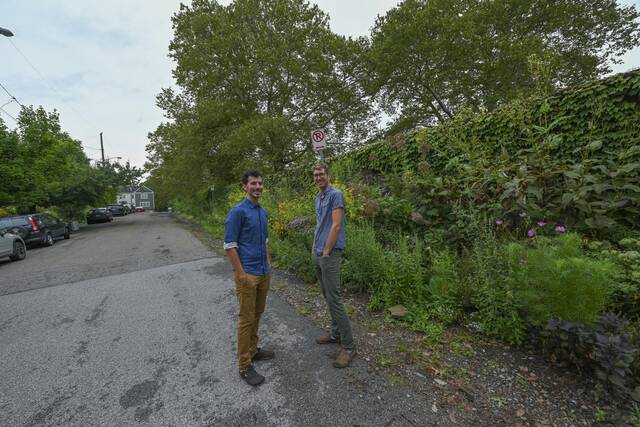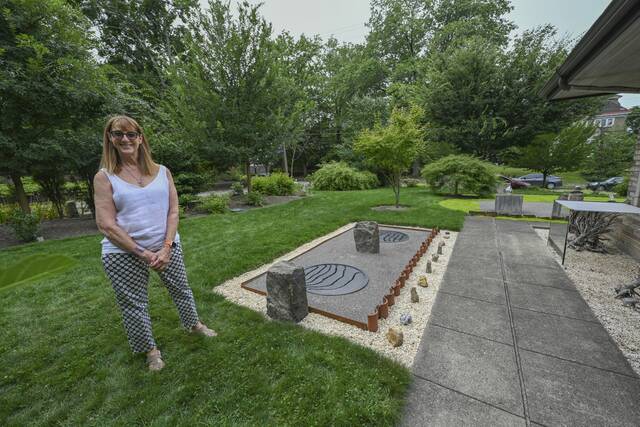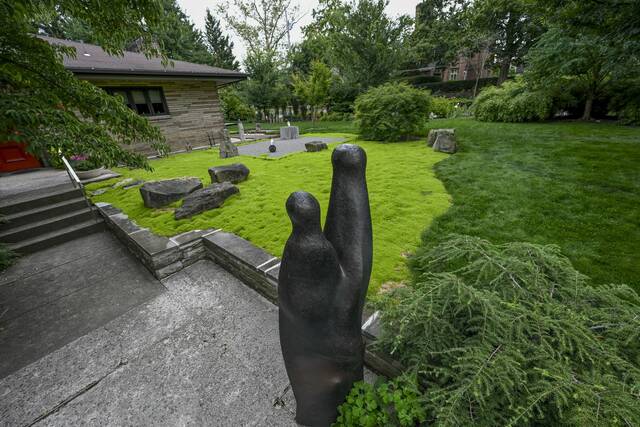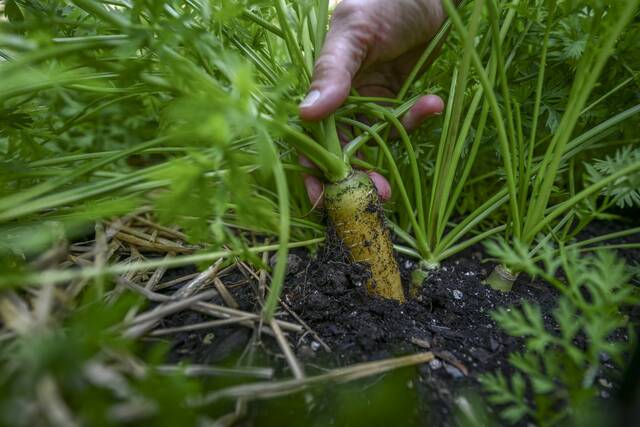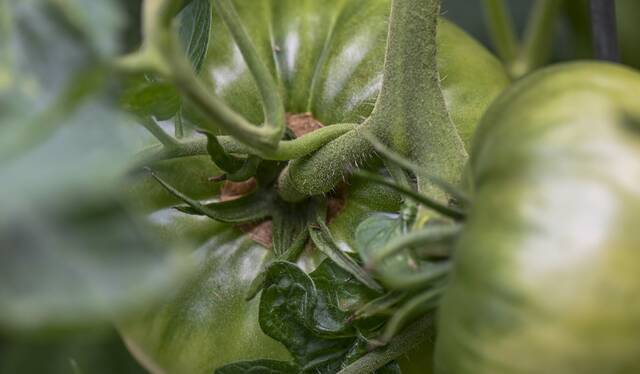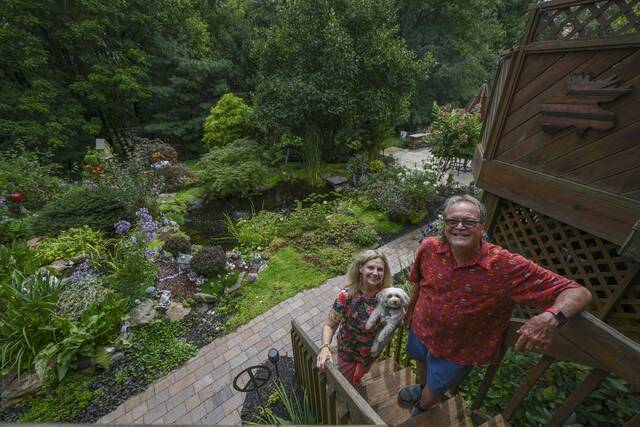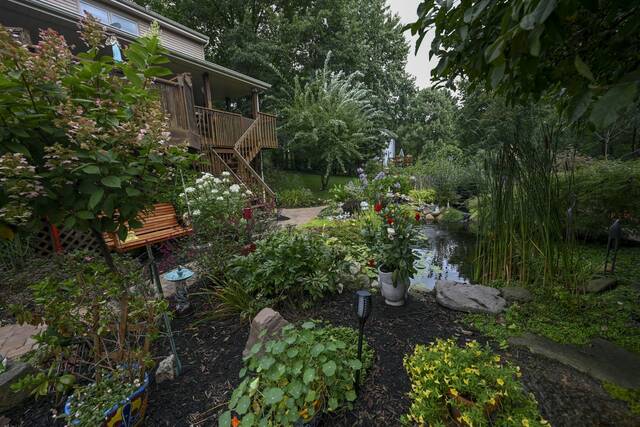Meet the winners of the 2023 Sustainable Gardening Awards from Phipps Conservatory
Now in its fourth year, the Phipps Conservatory Sustainable Gardening Awards recognize five intriguing gardens in our region. The annual awards put a spotlight on gardeners who follow the principles of sustainable land care that Phipps teaches in its education programs and follows in its own work.
The winners practice various aspects of sustainable, organic gardening. All are passionate people who cherish and nurture their outdoor spaces and seek to improve the land around them, both for their home and the greater community.
Chris Kosin and Josh Koshar
Native Planting and Wildlife Gardens
As a gardening educator and owner of GaiaScape, a landscaping company centered on native and edible gardens, Chris Kosin is all about gardening with a purpose. “I started out doing edible gardening because it gave me a sense of purpose for that space in urban areas,” he said.
He and Josh Koshar maintain the Lawrenceville garden that they established together in 2017. It concentrates on plants that are native to the area so that they can support the ecosystem; it’s not just about plants, but insects and animals, too. “Those plants are hosts to other native species that aren’t plants, and those are the ones who have co-evolved and create habitat around those plant species,” Kosin said.
He urges everyone to give gardening a shot: “Just to go out and try something. Don’t be afraid to fail but be ready to learn.”
MaryMichael Tribone
Garden That Manages Rainwater
With the help of Jonathan Dreher, of Dreher Garden Design, MaryMichael Tribone was able to turn her Squirrel Hill lawn into a sanctuary. “There wasn’t much in the way of a garden when we moved in, just lawn and hedges. So we hired Jon to help us landscape the yard,” she said. “A garden is just a pleasant place to be.”
Dreher and Tribone used features like Scotch moss — a plant much less resource-hungry than grass — and a rainwater-collecting irrigation system to use water most efficiently.
“The goal of the redesign here was to make it more environmentally friendly,” Dreher said. “I looked at their house and they had the perfect space for it.”
Tribone is gratified by the results: “It’s nice for humans, and good for the ecosystem.”
Alice Sacks Johnston
Micro-Gardens
Alice Sacks Johnston devoted her whole backyard to her potager (French for “kitchen garden”), primarily using raising beds constructed from cedar wood.
“I envisioned that it would be an edible garden,” she said, “and gradually I learned that I like having flowers there for the pollinators.”
Located in urban Regent Square, the garden may qualify as a “micro” in square footage, but in full bloom it looks mega. She uses the space to its fullest, growing her plants from seed and composting to make fertilizer for the garden. She and her husband, Joel, eat the produce they grow.
The Johnstons’ house nearly borders Frick Park. “It is shocking to people how much wildlife we get,” she said. “There are so many kinds of birds, snakes, toads, insects, and butterflies.”
“My garden is my refuge and my happy place,” she said.
Frank Noll
Abundant Edible Gardens
“Putting some seeds in dirt” is how Frank Noll responded when asked how he got started with gardening. “It’s a family thing, but also a human thing, to garden.”
For Noll, gardening is about cultivating a relationship with the environment. “It’s important to have connection to nature and the food system, just to remember we’re part of this much larger system. I like the idea of being able to go for a walk and eat along the way.”
He is especially excited about the Rutgers tomato in his Stanton Heights garden. “It was the Campbell’s soup tomato for many decades, but was only reintroduced in 2016,” he said.
“It’s interesting to experiment with different plants, try new things. If you don’t like them, move on to another one,” he said.
Cathy and Rob Preuhs
Gardens for Personal Retreat
For Cathy and Rob Preuhs, having a relaxing outdoor space is a team effort.
“We have 18 different areas and beds, including the pond, so we go on patrol. So that’s how we approach it,” Rob said. At their property in Economy, Beaver County, the many features include a pond, waterfall and stream.
In creating their garden, they didn’t just aim to make a haven for plants, but for other living things, too.
“Gardening is not just the plants, but the insects and birds. … I love bluebirds and they did nest in our yard this year,” Cathy said.
“I like the pond the best because it’s filled with life. We have green frogs, dragonflies, toads that mate in April and then we have tons of tadpoles,” said Rob.
This has been a paid article submitted by our content partner.
Remove the ads from your TribLIVE reading experience but still support the journalists who create the content with TribLIVE Ad-Free.



